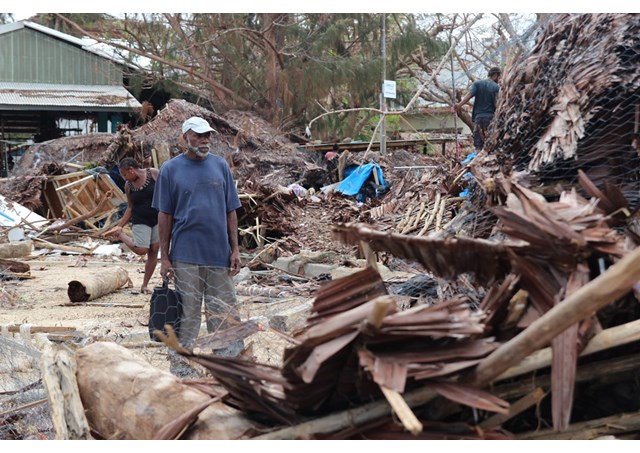
NZ earthquake: Caritas' precious collaboration with Māoris

(Vatican Radio) New Zealand Prime Minister John Key has visited towns affected by a powerful earthquake, saying officials are doing everything they can to restore infrastructure, but that damage is so extensive it will take some time.
The 7.8 magnitude quake on November 14 killed two people and triggered landslides that still block a major coastal highway. Hundreds of tourists have been evacuated from Kaikoura in helicopters and by a navy ship. The town is a popular whale-watching venue.
Although various humanitarian organizations are offering support, rescue efforts have been affected by a wave of aftershocks, Caritas Aotearoa is one of the organizations currently providing assitance to the affected regions.
Monsignor Gerard Burns, Vicar General of the Archdiocese of Wellington and President of Caritas Oceania, spoke with Vatican Radio’s Linda Bordoni about the aid Caritas Aotearoa is providing and about how it works in collaboration with the indigenous people living in the area.
Monsignor Gerard Burns explains that although the earthquake was powerful, it hit a rural area that is not heavily populated. It was felt as far as 150 kilometers away in Wellington, the capital city. There is a lot of damage to the main highway and main railway, in addition to land slides, which have made some roads inaccessible. There is a major tourist town there, Kaikoura, which has been cut off by road so the assistance to the people in that area has to come by air or sea.
Monsignor Burns thinks that the people of New Zealand “are affected as much by the shock of the quake as the fear that comes with that and not just the immediate quake which was huge, but the mini after shocks that happened.”
Caritas Aotearoa has contact with the indigenous Māori community in the isolated region and a good working relationship with them that adds much extra value to what Caritas is able to offer.
He says the Māori’sr main industry is tourism, including a thriving whale watching business and explains that the community uses the profits for health programs, and Caritas Aotearoa has been working with them.
While the army and air force respond to emergency events and complete big operations like evacuations, Caritas operates on a more specific, local level operation in terms of help and care of the local population.
He recalls that the 6.3 magnitude earthquake that struck Christchurch in 2011 was just 100 kilometers north of last week’s earthquake.
“It’s been five or six years now since those earthquakes and I’d say the rebuild is probably about half way through. I think because of their experience they felt great solidarity with the people north of them who have been affected by this particular case” he says.
Monsignor Burns explains that one of the particular things Caritas Aotearoa does is establish relationships with local Māori communities “to ensure that it too lives out what we call the Covenant. It’s almost like a religious agreement that was made 150, 170 years ago so that’s why they established this particular working relationship with the indigenous people”.
“Indigenous people are looking to stand on their own two feet and Caritas is looking to work alongside them and walk alongside them” he says.
Even though the whale watching business, which sounds like a commercial venture, is a product of one of the foundation stories. Burns explains that “the story says that they came to New Zealand on the back of the whale. Having this whale watching business is actually building, not just on a commercial venture but actually on their own heritage”.
“When indigenous people identify themselves, they don’t start with themselves as an individual, they start with their ancestors and the lands and mountains and rivers and seas which they have come from. They see themselves very much as an integrated part of the created world and that spirituality is very close to what Pope Francis spoke about in his encyclical 'Laudato Sii'. That means that they have a special particular care for the natural world” he says.
| All the contents on this site are copyrighted ©. |


